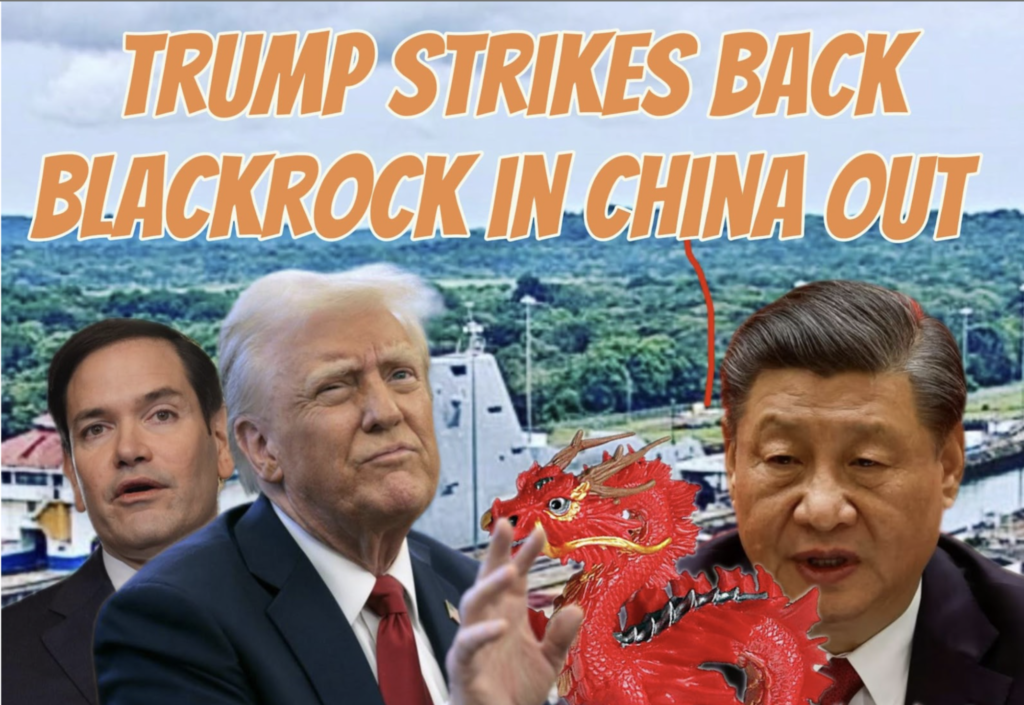20 Mar Trump Strikes Back: Reclaiming Panama’s Ports, But China’s Long Game Continues
By,
Jesús Daniel Romero, Senior Fellow, MSI2
In a significant geopolitical and economic development, BlackRock has secured the concessions to operate Panama’s strategic ports of Balboa and Cristóbal, reclaiming control from Hutchison Whampoa, a Hong Kong-based company with strong ties to Beijing.
This announcement comes just 30 days after U.S. Secretary of State Marco Rubio’s visit to Panama, underscoring the growing influence of U.S. policy in Latin America’s critical infrastructure. The move signals a shift in regional power dynamics, with implications for global trade, U.S.-China competition, and Panama’s role as a key logistics hub. While this is undeniably a win for U.S. interests, Beijing has still secured a major victory—Panama’s continued recognition of China over Taiwan.
I arrived in Panama in September 1996 on a Defense Intelligence Agency assignment. At that time, the concessions to operate the ports of Balboa and Cristóbal had already been awarded to Hutchison Whampoa Ltd. Recognizing the strategic significance of this development, I immediately reported it up the chain of command. However, there was little interest from the U.S. embassy or my agency—the primary focus was on the reversion of the Panama Canal and the impending relocation of Southern Command from Quarry Heights to Miami. The port concessions, it seemed, were already a fait accompli.
At the time, Panama maintained official diplomatic relations with Taiwan and was a key regional partner. This alliance shaped its foreign policy and economic dynamics, limiting Beijing’s influence in the country. Yet, despite its formal ties to Taiwan, Panama awarded the port concessions to Hutchison Whampoa Ltd. This underscored China’s long-term strategic play—expanding its foothold in Latin America well before Panama formally severed ties with Taiwan in 2017.

Within months of Hutchison Whampoa Ltd. securing the port concessions, concerns mounted in the United States over China’s growing influence in Panama’s strategic waterways. One of the most vocal figures was Admiral Thomas H. Moorer, former Chairman of the Joint Chiefs of Staff, who publicly warned about the national security risks of allowing a Chinese-linked company to control key access points to the Panama Canal. His warnings resonated within the defense and intelligence communities, yet Washington remained largely focused on the canal’s reversion and the withdrawal of U.S. military forces. Despite these concerns, no substantial action was taken to challenge or curb China’s expanding presence in Panama.
Meanwhile, I remained deeply concerned about China’s aggressive push for the port concessions. Rumors circulated that Beijing had paid off Panamanian political figures to secure the deal—a claim that, while unproven, was far from implausible given Latin America’s deeply ingrained culture of corruption. The question was not if corruption played a role, but rather how much. To me, this was never just a business deal—it was a calculated geopolitical maneuver. Securing these ports wasn’t simply about trade and logistics; it was about establishing a foothold in Panama to undermine Taiwan, which at the time still maintained diplomatic recognition from the country.
By 1998, the U.S. Congress was holding hearings on the Panama Canal, reflecting growing concern over the strategic implications of Hutchison Whampoa Ltd.’s control of the ports. My phone rang constantly with calls from congressional staffers who had somehow tracked down my number, seeking insights and information. I was also directed to reroute inquiries to CONUS, a sign that higher-ups were finally paying attention. For the first time, it seemed that Washington was beginning to grasp the magnitude of what was at stake. But despite the increased attention, no meaningful action was taken. The concessions remained in place, and Beijing’s influence in Panama only deepened.
China’s ambitions weren’t confined to Panama. Around the same time, Beijing was aggressively pursuing control of a key terminal in the Port of Long Beach. In 1997, the China Ocean Shipping Company (COSCO)—a Chinese state-owned enterprise—secured a 40-year lease to operate the former U.S. Navy Long Beach Naval Shipyard, converting it into a shipping terminal. This development triggered national security concerns in the U.S. Congress, given COSCO’s ties to the Chinese government. But despite these warnings, the lease was approved, marking China’s second major maritime victory in a short period.
However, unlike in Panama—where Chinese influence remained entrenched—U.S. policy eventually reversed course. In 2019, under pressure from the Trump administration, COSCO was forced to sell its lease for the Long Beach Container Terminal to Macquarie Infrastructure and Real Assets, an Australian company, for $1.78 billion. This move demonstrated that, while China had gained a foothold in key maritime infrastructure, its influence was not unshakable.
Still, Beijing’s true strategic victory was never just about securing physical control over the ports of Balboa and Cristóbal. While gaining influence over these logistical hubs was valuable, the real geopolitical prize was Panama’s diplomatic recognition of China over Taiwan in 2017. In this regard, Beijing played its hand masterfully, leveraging economic incentives, infrastructure investments, and political influence to shift Panama’s allegiance.
At the same time, U.S. policymakers played a critical role in dislodging Beijing from these ports of strategic importance—one of the rare reversals in China’s growing influence over Latin American infrastructure. It only took 29 years for me to have witnessed this wrong turned right. Yet despite this setback, Beijing’s long-term objective—isolating Taiwan and expanding its global influence—remains intact. The battle for Panama was never just about maritime trade; it was a calculated step in China’s broader strategy to weaken Taiwan and cement its dominance in global affairs.
There is no doubt that China’s ultimate goal is to erase Taiwan from the geopolitical stage, and it is investing significant effort in pressuring Guatemala, Belize, and Paraguay. Future U.S. administrations must make it clear to President Xi that Latin America is not for sale.
References
Moorer, T. H. (1998, June 16). Testimony before the U.S. Senate Foreign Relations Committee on the Panama Canal. U.S. Senate. https://thenewamerican.com/us/politics/foreign-policy/admirals-sound-the-alarm/
Reuters. (2025, January 30). Rubio warns of risk of China shutting down Panama Canal in any conflict. Reuters. https://www.reuters.com/world/americas/rubio-warns-risk-china-shutting-down-panama-canal-any-conflict-2025-01-30/
Reuters. (2025, March 5). CK Hutchison shares jump 22% after Panama Canal stake sale to BlackRock. Reuters. https://www.reuters.com/markets/asia/ck-hutchison-shares-jump-22-after-panama-canal-stake-sale-blackrock-2025-03-05/
U.S. Congress. (1997, April 15). National security implications of the proposed lease of the former Long Beach Naval Shipyard to the China Ocean Shipping Company (COSCO). Congressional Record. https://irp.fas.org/congress/1997_cr/h970415-cosco.htm
